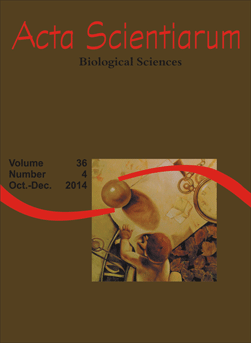<b>Ultrastructural aspects of the tongue in Magellanic Penguins <i>Spheniscus magellanicus</i> (Forster, 1781)
Abstract
The tongue of birds presents diversified morphologic characteristics, related directly their feeding habits and may be adapted to food capture. Penguins of the Spheniscidae family are pelagic birds that are totally adapted to the marine environment. The objective of this study was to describe the morphology of the tongue in Magellanic penguins (Spheniscus magellanicus). In order to investigate these characteristics, six tongues of juvenile S. magellanicus were collected and their morphology analyzed macroscopically and microscopically. The tongue of the Magellanic penguin has a fusiform shape with a round apex that is narrower than the root, following the shape of the beak. The epithelium of the tongue of the Magellanic penguin showed to be stratified and very keratinized, with the presence of lingual papillae that showed a caudally inclined apex. The neighboring connective tissue showed absence of mucous glands. The cartilaginous skeleton was observed in the medial region of the tongue, extending from the base to the apex. The structure of the tongue of the Magellanic penguin showed to be similar to that of other penguin species, but also showed peculiar characteristics that were not observed in other bird families.
Downloads
DECLARATION OF ORIGINALITY AND COPYRIGHTS
I Declare that current article is original and has not been submitted for publication, in part or in whole, to any other national or international journal.
The copyrights belong exclusively to the authors. Published content is licensed under Creative Commons Attribution 4.0 (CC BY 4.0) guidelines, which allows sharing (copy and distribution of the material in any medium or format) and adaptation (remix, transform, and build upon the material) for any purpose, even commercially, under the terms of attribution.
Read this link for further information on how to use CC BY 4.0 properly.












1.png)




3.png)













